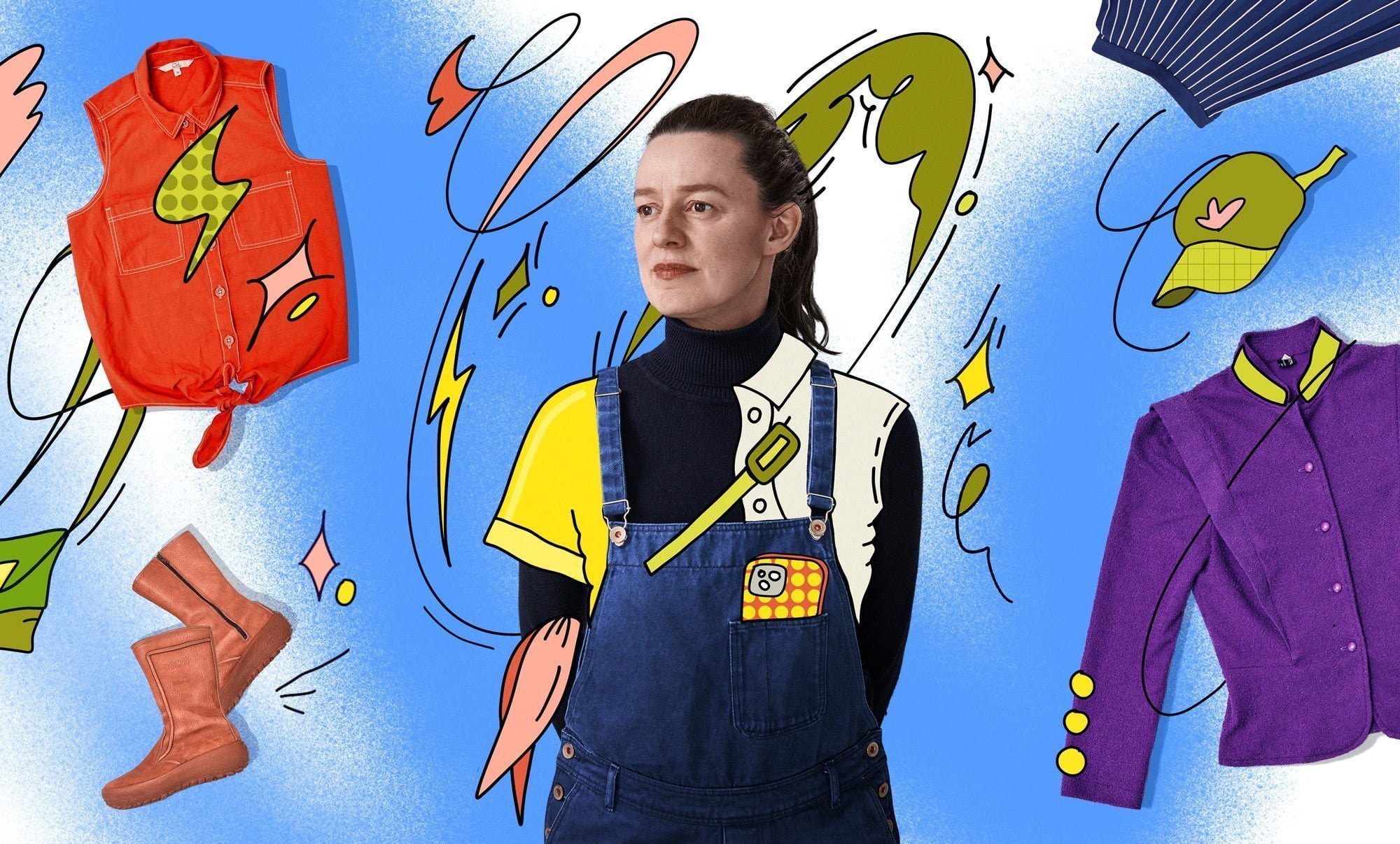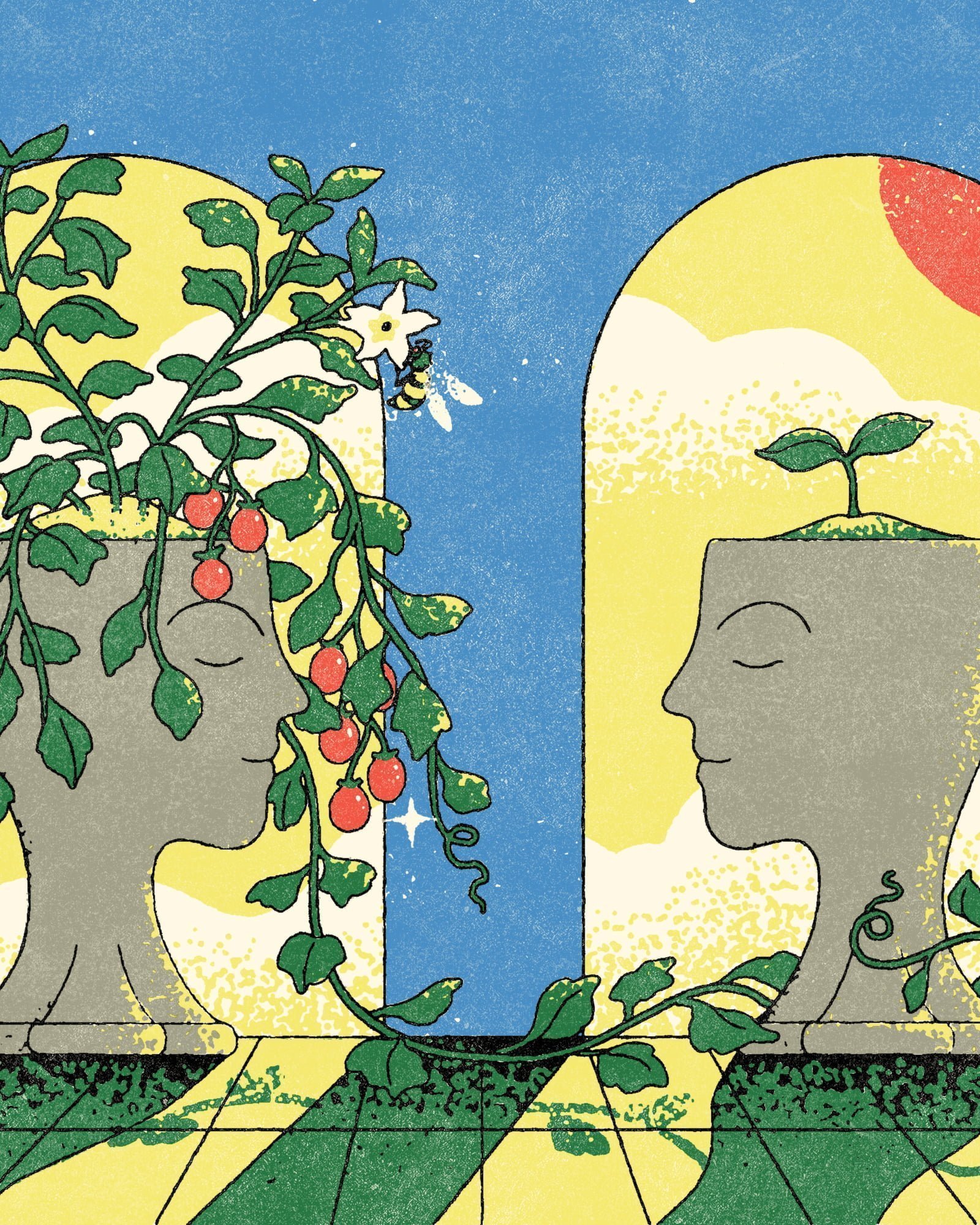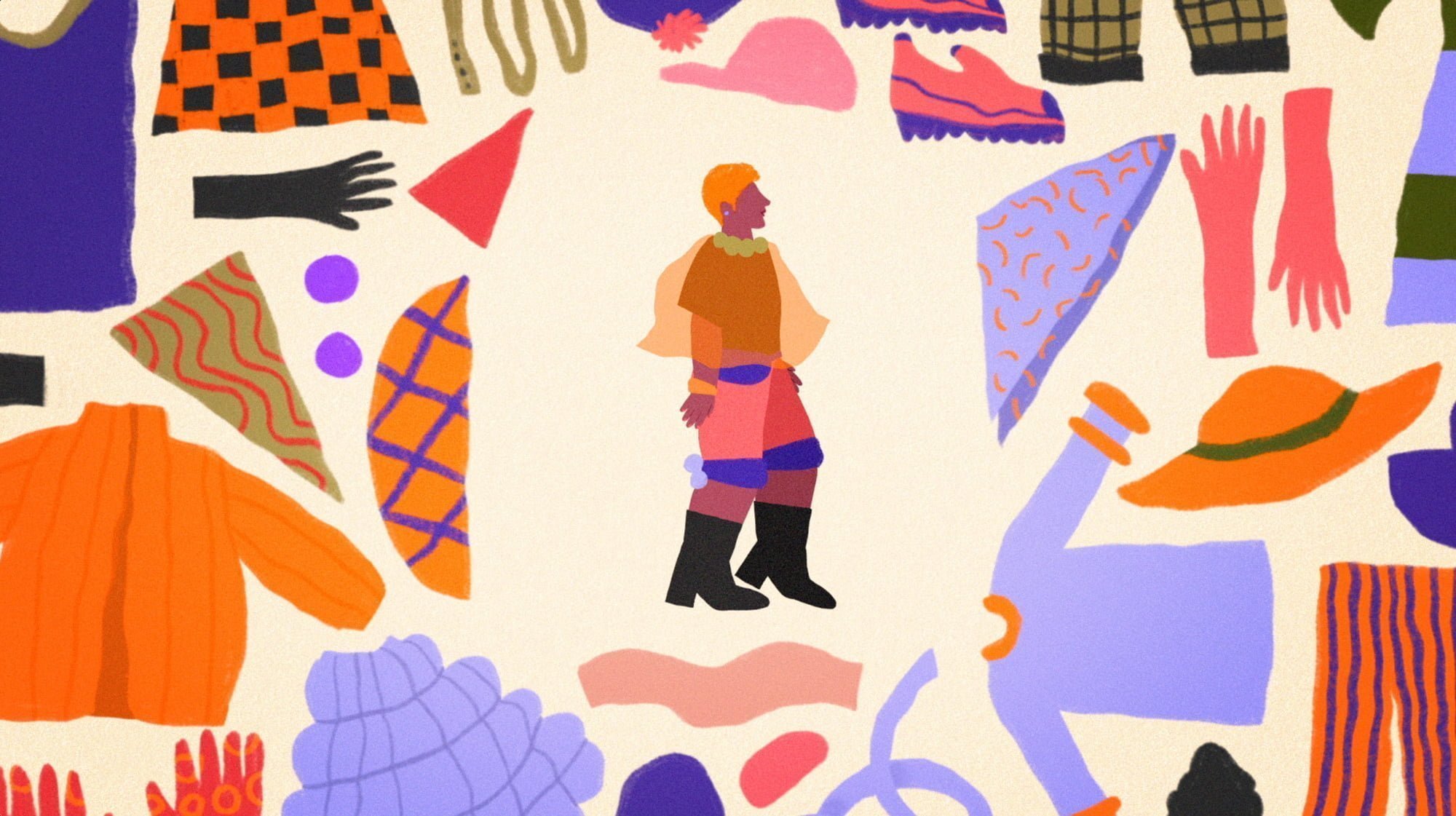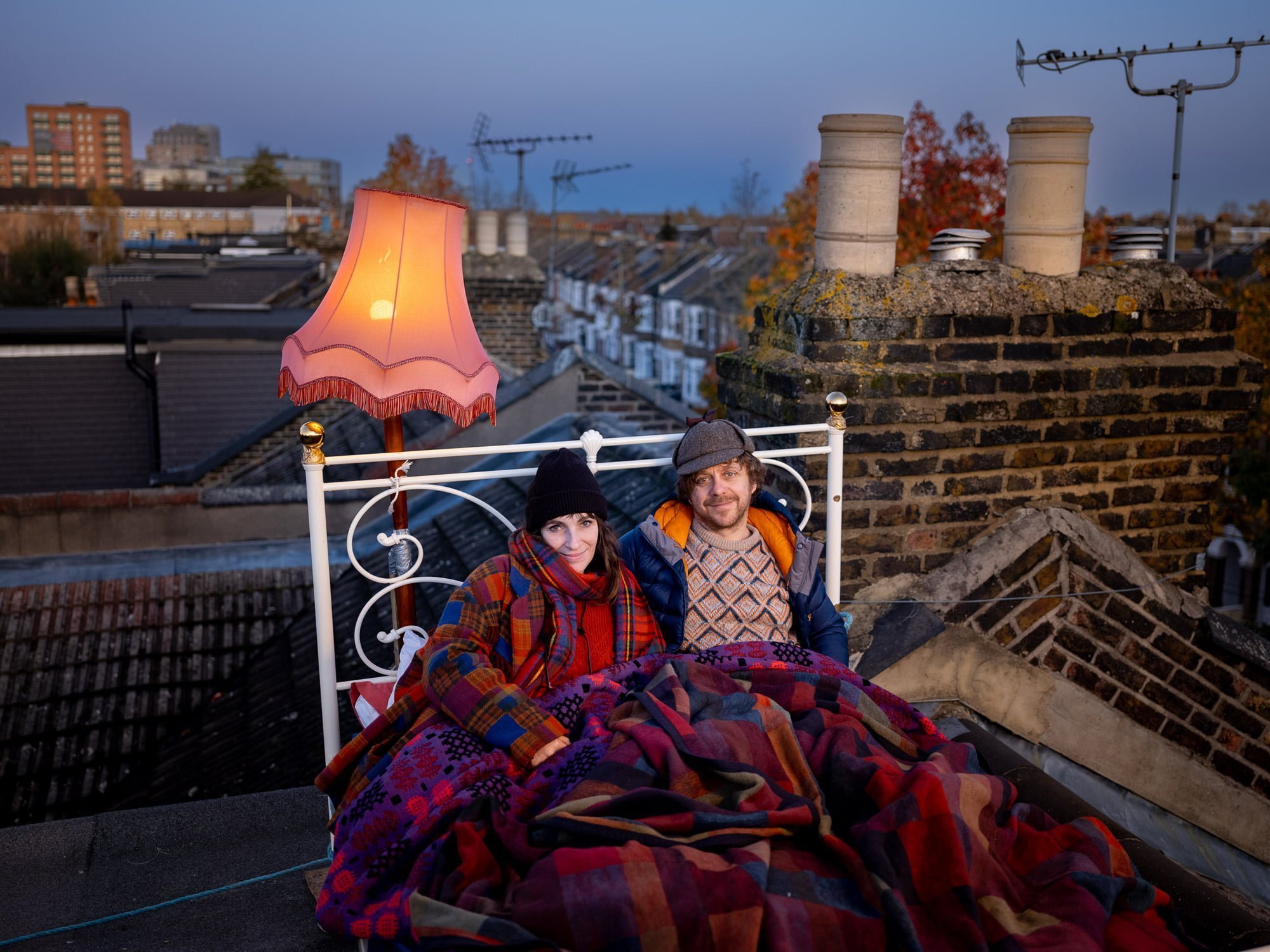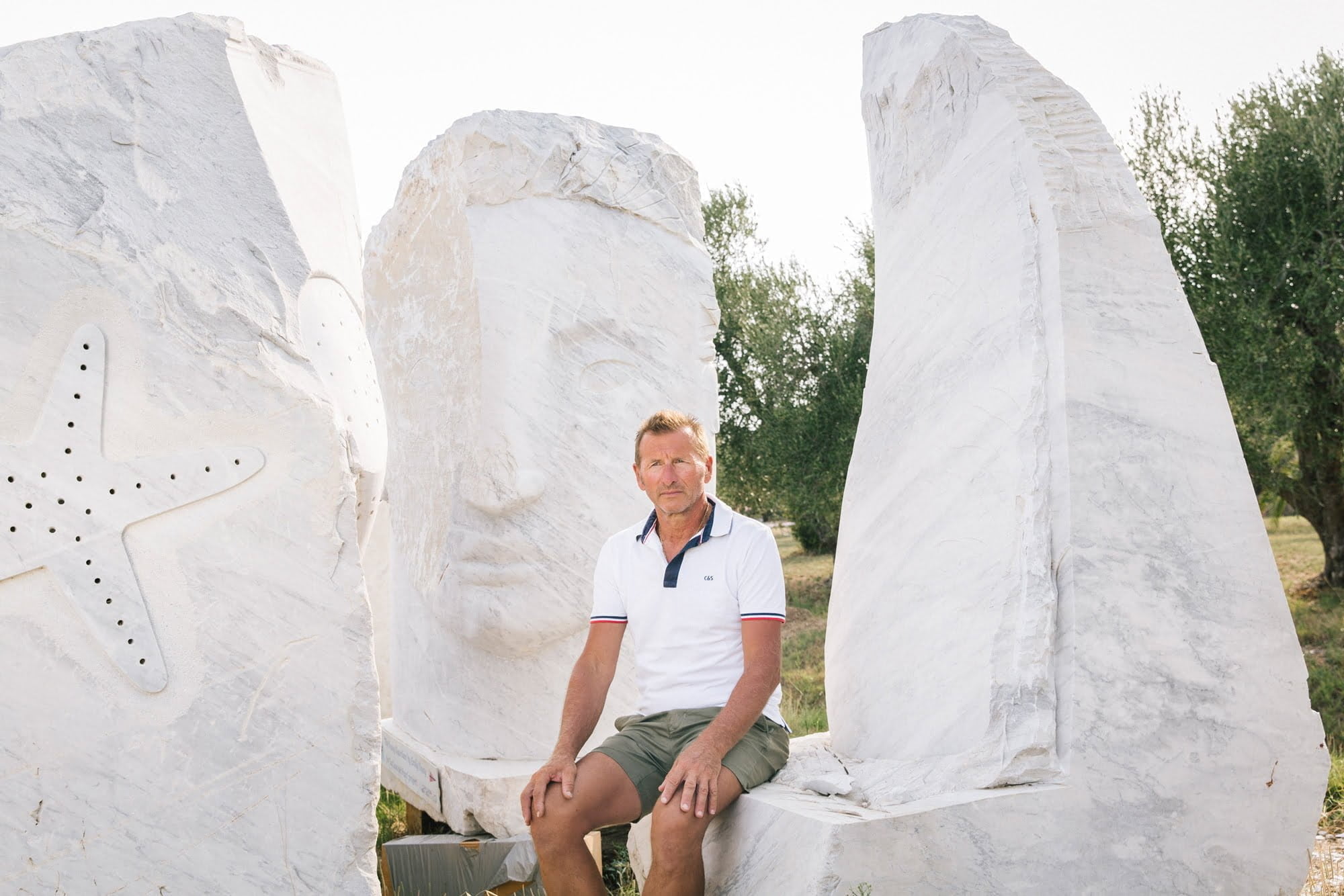We only wear half of the clothes we own. So what about the remaining 50%? Why are our closets overflowing and what on earth is in there anyway? On a quest to find out, our writer Anne-Marie Hoeve spends two weeks wearing her least-worn items.
Today I’m an archeologist. A clothing archeologist. I will dive into distant regions of my wardrobe to recover items that haven’t seen daylight for aeons.
I slide open the white doors, roll up my sleeves and start digging. First greeting me are my front-row favourites: sweaters and jeans. But they’re off-limits for the next 14 days.
I get stuck in and soon enter a forgotten realm. There are wisps of fabric masquerading as summer dresses – wholly unsuited to non-Mediterranean climates; a red-and-white striped maxi dress that instantly turns me into a walking lighthouse, and alongside it, a beloved checked shirt I thought I’d lost.
Then, something shiny catches my eye. My old friend! The turquoise top that has partied me into many a New Year. I plunge deeper, unearthing different eras and trends: flares, shoulder pads, ditsy florals, and a baffling number of jumpsuits. Digging into this time capsule that, apparently, is my wardrobe, my sartorial past stretches so far back I worry I’ll come out at the end clutching a neolithic bog tunic.
How did all these clothes get here? I’m not a fashionista or a super-consumer. I grew up wearing my brother’s hand-me downs. Sturdy, practical stuff. Brown corduroy. Jeans with giant knee patches. Entire summers in the same shorts and T-shirt followed by teen years in school uniform, with two outfits for weekends. But now look at me, and look at this mountain of clothes.
At least I’m not the only one, I tell myself. In the past 20 years, clothing consumption has doubled. And we’re not only burdening our heaving wardrobes, but also our heating planet. Clothing is responsible for 10% of annual carbon emissions, more than all international flights and maritime shipping combined. So in terms of individual impact, adjusting our buying habits can really make a difference, and it’s probably time I get on board.
So what to pick from this unloved pile and put on?
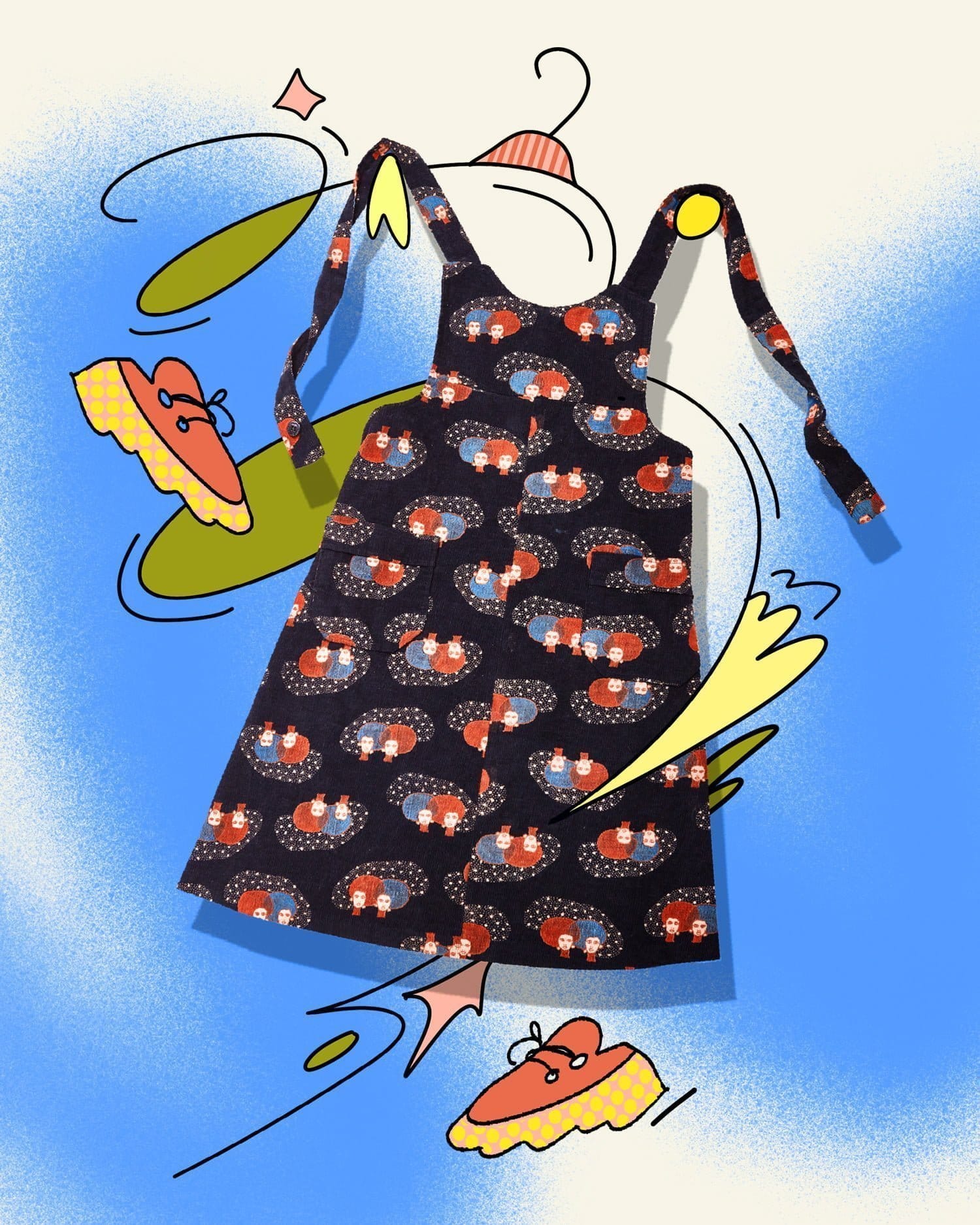
Corduroy pinafore dress
A pinafore dress glaring at me from the top of the heap feels like a good place to start. And I mean literally glaring at me. It has eyes. This is fabric on LSD – with a pattern of floating women’s heads in earthy colours. Mum wore it in the early 1970s. It’s etched into one of my earliest memories.
I try it on and it fits. I almost wish it didn’t. The prospect of wearing it to work is making my palms sweat like the bad trip that must have produced the pattern. And then my teenage daughter seizes the opportunity to broadcast her unrequested opinion: “I don’t like clothes that look back at me.” Well, too bad.
At the office I can see my colleagues eyeing the LSD women. The women eye them back. I feel the need to explain: “It’s a challenge”. By the end of the day I’m still not nuts about the pattern – but biking home, I love how mum’s dress is whizzing around on these same city streets after 50 years, brought back to life through me. It’s been nine years since she passed away and having this tangible connection threading our lives together – in something I can wear close to my skin – touches my soul.
“In my bright blue farmer armour, I can deal with anything the day may hurl my way”
Bright blue dungarees
These were bought in a heady mix of post-Covid brain fog and elation at being able to go out into the world again. It must have worn off fast because I’ve only put them on twice – in the house. What can I say? They were on sale and seemed like a good idea at the time. “You look like a farmer,” my teen informs me. She doesn’t mean this as a compliment. Her seven-year-old sister thinks this is the best compliment. Incidentally, my grandparents were farmers, and by the last swig of my morning coffee I realise I was born to wear these. They’re in my DNA. I love how they make me feel. Tougher. Stronger, more practical. Like I won’t put up with any nonsense. In my bright blue farmer armour, I can deal with anything the day may hurl my way. By mid-afternoon I don’t understand how I’ve lived without these beauties for so long.
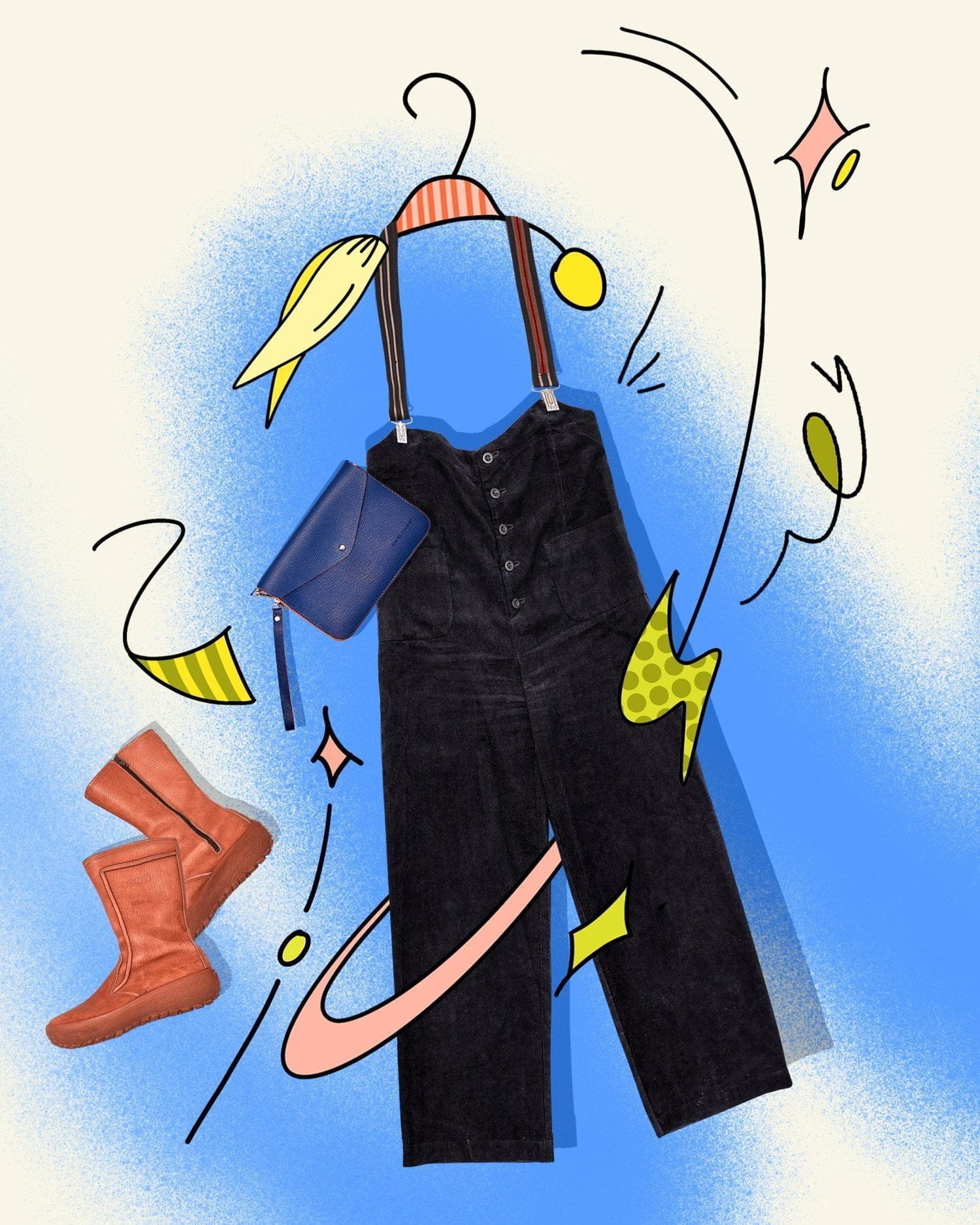
More corduroy
There’s an inordinate amount of corduroy in the back of my closet. Including some wide, high-waisted trousers with matching suspenders – or braces – depending on which side of the Atlantic you’re from. In my mind it exudes a 1930s, Marlene Dietrich kind of cool. It doesn’t, apparently. “You look like the old guy that works in our school library,” my teen snickers. Does he also exude a Marlene Dietrich kind of cool? I don’t bother asking. When I inform both kids that I’ll be wearing them to the parent get-together that evening even my youngest blanches. “Nooooo!” Once there, a mother surprises me with a compliment. Another would love to have them if I don’t want them. I sip my wine and quietly celebrate the trousers being voted more stylish than strange.
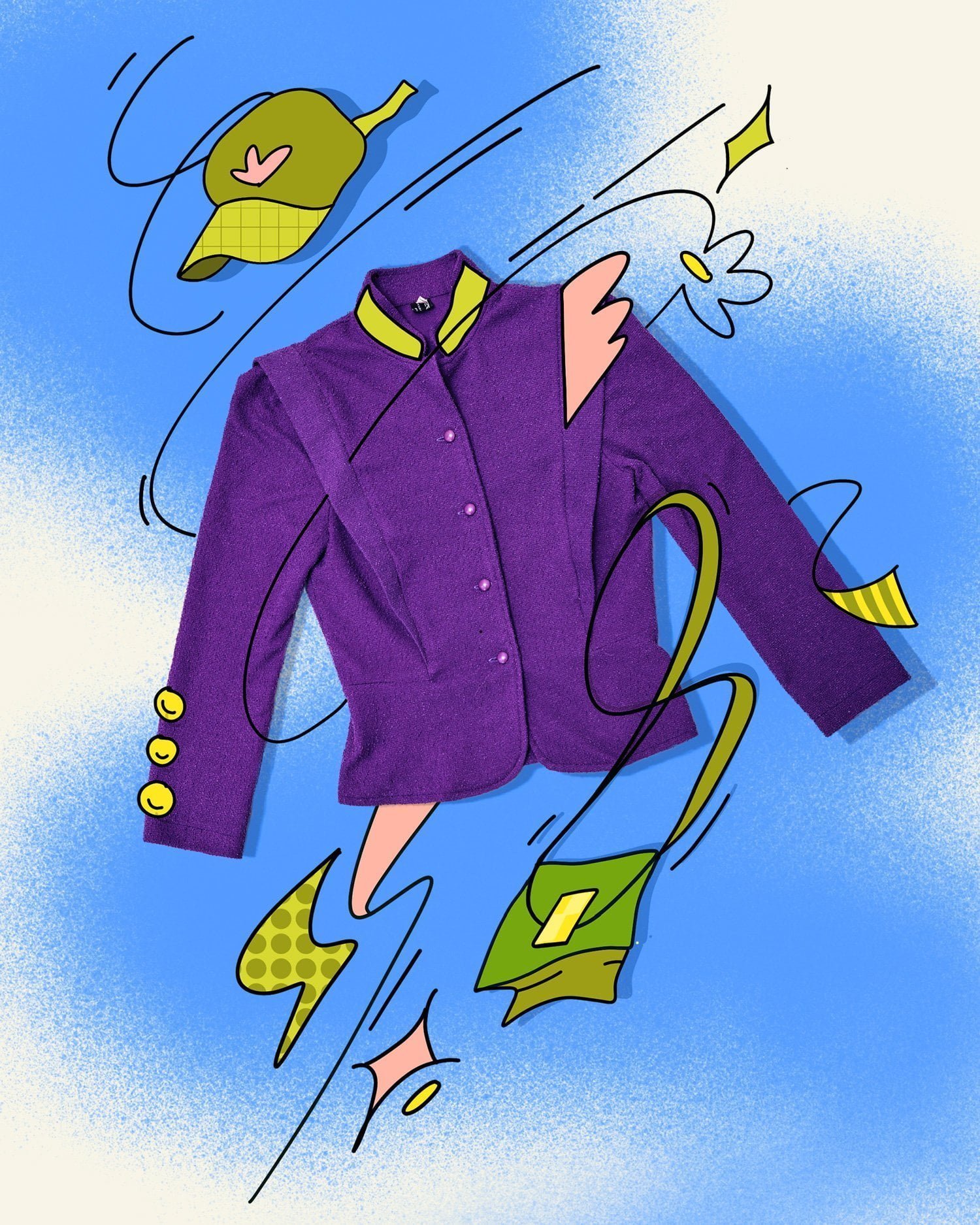
Purple ’80’s jacket
This one is grape-purple and has winged shoulders. Think Michael Jackson’s Thriller jacket meets 1980s secretary. Where and why did I buy it? What can I say, it cost €5 and it was King’s Day – an annual Dutch holiday that sees city streets transformed into a giant flea market. Traditionally, you wake up the next morning with something you didn’t leave home with, and a story. I’d kept the jacket for the memory of that perfect, fun-filled day. Both kids give it a solid thumbs up. I suspect they like the novelty of seeing their mother in this real-life game of dress-up.
The pile
The days go by. As I wear my way through the pile, I can’t really answer the question of how I ended up with this. Maybe a behavioural psychologist can help. Dr. Carolyn Mair is specialised in the psychology of fashion and has written a book on the topic. Why are we buying so much, I ask?
One reason is that clothing has become cheaper and more easily accessible than ever, she says. We buy new things because we can. But there’s also a deeper psychological drive. “We project our identity through what we’re wearing and want to present our best selves,” Carolyn says. “Most people do that as a fundamental human need but we’re socialised to believe that being on trend, being fashionable is our best selves.”
“This human trait has produced a clothing industry in overdrive, churning out things faster than we can ever wear them”
Linked to this is a desire to belong to a certain tribe, she explains, pointing out that people were already embellishing their look millenia ago. “I’m guessing that even the kind of loincloth you wore said something about you,” she adds.
But fast forward a few thousands of years and now this human trait has produced a clothing industry in overdrive, churning out things faster than we can ever wear them and making a profit from workers not being paid a living wage. So where to go from here?
This is not who I want to be. Looking at the pile again, I remember something else Carolyn said: “Ultimately it’s confidence that’s the most attractive look. It doesn’t matter what you wear. It’s how you wear it. How you carry yourself.”
She’s right. I realise that my wardrobe is filled with people I want to be, items bought in a (vain) attempt to be more confident. Clothing is a chance to adopt a second skin in an instant. Which other animal gets to do that? And while self-expression and the ability to transform yourself can be a wonderful thing, how many items does that require?
“I have all I need. And can’t wait for someone else to take these things out into the world as a new, wearable, memory”
According to waste charity WRAP, simply extending the average life of a garment by nine months can reduce its carbon footprint by around 25%. I’ve had some things for so long their carbon footprint must be approaching zero – as long as I actually wear them.
And so, I put on my new-found favourites – the blue dungarees and purple jacket – and sort through the pile. I keep the corduroy trousers and anything with shoulder pads (great for instant confidence).
The rest – the stuff that doesn’t fit, is no longer me, never was me, or never will be me – I collect and put away in a bag ready for King’s Day. I actually have all I need. And I can’t wait for someone else to take these out into the world as a new, wearable, memory.
And mum’s dress? I’m keeping it. I’m warming to the LSD ladies and maybe one day, they’ll witness my teenage daughter cycling through the streets, smiling at the time her mother wore them to work.
JOIN OUR #YOUGOTTHELOOK CHALLENGE
- Step 1
Spend the next 60 days wearing only what you already own. Tell friends, family and colleagues. The more people joining in, the more fun. - Step 2
Dive in. Mix and match in creative ways to create new looks you didn’t know you had. - Step 3
Share your journey and outfits with us on social media and don’t forget to tag us and use the hashtag #YouGotTheLook.
Find out more
For an informative deep-dive into this topic, check out behavioural psychologist Dr Carolyn Mair’s book: The Psychology of Fashion. As founder of Carolyn Mair Consulting Ltd, she applies psychology to make fashion better.
Get the book